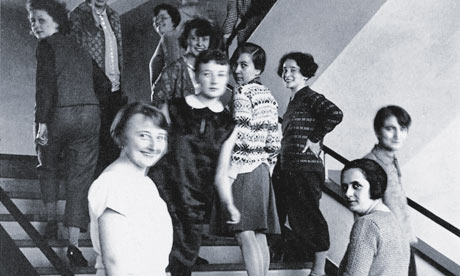skip to main |
skip to sidebar
Table of Contents
Lecture Reflections1/22/10: What is Design?1/29/10: Where Does Danish Design Come From? What are its Roots?2/9/10: Product Design2/16/10: Furniture Design3/9/10: Fashion Design3/12/10: Interior Design3/16/10: Architecture & Design4/13/10: Civic Design, Design for the Public4/16/10: Transportation Design and ArchitectureSymposia Reflections1/26/10: Symposium 1 of 8, "Form and Distinction," by Ole Thyssen2/2/10: Symposium 2 of 8, Design as a Tool for Marketing and Branding2/12/10: Symposium 3 of 8, Making High Quality Design Available to the General Public2/19/10: Symposium, 4 0f 8, Craftsmanship & Mass Production2/26/10: Symposium 5 of 8, Tradition and Modernity3/26/10: Symposium 6 of 8, Architecture & Design as a Vehicle for Creating a Welfare State4/20/10: Symposium 7 of 8, Danish Transportation4/23/10: Symposium 8 of 8, Public Spaces, Public LifeReading Reflections1/26/10: "Form and Distinction," by Ole Thyssen1/29/10: "Design, an Integral Part of the Danish," by Anne Maria Summerhayes2/9/10: Excerpts from "Danish Design," edited by Svend Erik Møller and translated by Morgens Kay-Larsen 2/19/10: "Applied Art Between Nostalgia and Innovation," by Kristian Berg Nielsen2/23/10: "Furniture and Industrial Design," from the Ministry of Foreign Affairs of Denmark2/26/10: "The Magic of the Wokshop - Where hand and mind unite," by Henrik Sten Møller, and "Walk the Plank," by Tine Nyaard and Thomas Dickson3/9/10: "Danish Fashion," by Marie Riegels Melchoir from the Encyclopedia of World Dress and Fashion3/16/10: "New Danish Architecture," by Tobias FaberFieldstudy Reflections
2/10/10: Royal Copenhagen, Georg Jensen, Illums Bolighus
March 2010: Kunstindustrimuseet
March 2010: Danish Design Center
4/14/10: City Walking Tour & Danish Architecture Center
1/29/10 Lecture Reflection: From Where Does Danish Design Stem? What are its Roots?
The Story of the Stools reconciled Thyssen’s assertions that “as a rule, the design process is more one of reworking than creating from scratch” (036). Kaare Klint's and then Paul Kjærholm's re-workings of the Bronze Age stool speaks to the way that design does not have to be the creation of something never before. Instead, some of the most interesting design can be the improvement or reconsideration of something previously crafted. Both men acknowledged precedents and traditions but them pushed passed them. The framework and limitations of the past provided inspiration for these men who then designed stools that showcased their craftsmanship and understanding of materials. Although inspired by the same design and consisting of the same basic design, Klint's and Kjærholm's stools have a radically different aesthetic feel, underlining the importance of material and individual perspective in the process of design.
 Bronze Age Stool
Bronze Age Stool
http://www.gallica.co.uk/bronzeage/guldhoj_stool_s.jpg
 Propeller Stool, Kaare Klint
Propeller Stool, Kaare Klint
http://cfs4.tistory.com/upload_control/download.blog?fhandle=YmxvZzE3MTQ3MEBmczQudGlzdG9yeS5jb206L2F0dGFjaC8yNi8xODAwMDAwMDI2MDUuanBn
 Propeller Stool, PK-41, Paul Kjærholm
Propeller Stool, PK-41, Paul Kjærholm
http://www.furnituredesign24.com/furniture/poul-kjaerholm/pk41-folding-stool_s.jpg
These designer's respect for precedent reflects the way that Danish designers study under previous masters, passing down techniques, styles, and mindsets, as well as respect for tradition. This linear progression of design genius has given Danish Design a cohesive feeling so that although innovation and modernity are always present, an adherence to craftsmanship, reductionism, and respect for materials is continuous. I appreciate this design legacy and the way it produces designers who are at once aware of the past but still desire to go beyond what came previously, to get ever closer to the perfect design.
Nevertheless, I can't help but think that such a system is exclusionary and overshadows designers who do not fit into the master/student relationship. This becomes particularly problematic when one considers the male dominated nature of the design field. I did a quick google search of "Bauhaus school, women" and came across an interesting article from The Guardian. Women were accepted into the school, in fact, when she school opened, more women applied than men. But why then are the men remembered? According to the article, Gropius believed that "women thought in 'two dimensions,' while men could grapple with three" and so female students were relegated into weaving fabrics and few others were able to work with ceramics. Both textiles and ceramics are thought to be crafts and associated with women. Therefore, they can less respect in the art world. As the Bauhaus school became primarily concerned with architecture, women were given less and less opportunities. I can't help but think that the sexist prejudices held by the Bauhaus school are partially the responsibility of the master/student relationship that has been and still is male gendered.
 The Women of Bauhaus
The Women of Bauhaus
http://static.guim.co.uk/sys-images/Guardian/About/General/2009/11/4/1257348837613/Bauhaus-women-001.jpg
I would like to think that if this male-centeredness of design can be eliminated anywhere, it is Denmark, with it's egalitarian society and relative gender equality. However, it will be the adherence to precedent that will hold it back.
---
Haus proud, The women of Bauhaus: When the Bauhaus art school opened in 1919, more women applied than men - so why have we never heard of them?
 Propeller Stool, PK-41, Paul Kjærholm
Propeller Stool, PK-41, Paul Kjærholm The Women of Bauhaus
The Women of Bauhaus


No comments:
Post a Comment